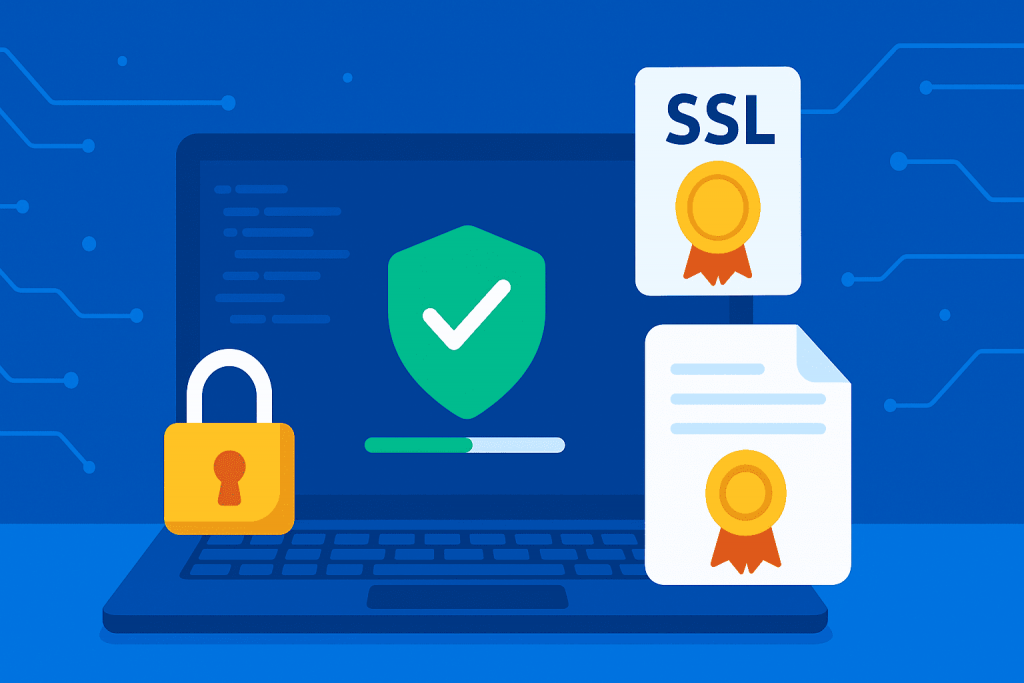
Imagine downloading a program from the internet. Your system shows a warning: “This file may be unsafe. The publisher is unknown.” You hesitate. Should you run it? Most users will hesitate — or refuse to proceed at all.
That’s where code signing comes in. It ensures that the file is authentic, secure, and hasn’t been tampered with. A digital signature shows users and systems that the code came from a verified source and remains unchanged since publication.
Code signing has become a global standard for software security. One of the foundational tools in that trust chain is the SSL certificate. In this article, we’ll explain how code signing works and how SSL certificates are connected.
What Is Code Signing?
Code signing is the process of applying a cryptographic digital signature to an executable file (e.g., .exe, .msi, .jar, or scripts) to confirm that:
- the file comes from a known developer;
- the code has not been altered after signing;
- it was downloaded from a trusted source.
Think of it as placing an official seal on your software — a seal that any system or user can verify before launching the file.
Why Is Code Signing Important?
1. Builds User Trust
Without a digital signature, users will see alerts like:
“The publisher could not be verified. Running this software might harm your computer.”
Most people will close the file and never open it again.
When your software is signed, users see your company name and can confidently proceed with installation.
2. Protects Against Tampering
If an attacker manages to alter your installer or inject malicious code, the digital signature will become invalid. Users and systems will detect this immediately.
Signing provides integrity — a guarantee that the code hasn’t changed since it was signed.
3. Required by Operating Systems
Modern OS platforms have strict security layers:
- Windows SmartScreen blocks unsigned executables.
- macOS Gatekeeper restricts apps without a trusted certificate.
- Antivirus software is more likely to flag unsigned files.
A proper code signing certificate helps bypass these issues, especially when using EV (Extended Validation) certificates, which offer higher trust.
4. Enables Automation, CI/CD & Updates
Signed code is easier to integrate into automated delivery pipelines. Auto-installers, update services, and system daemons all work more smoothly with trusted signed binaries.
How Does Code Signing Work?
- You obtain a code signing certificate (distinct from an SSL certificate).
- You use tools like signtool, osslsigncode, or jarsigner to sign the file.
- The file gets a signature and an embedded certificate.
- When launched, the system:
- verifies the publisher name,
- checks the signature’s validity,
- confirms that the file hasn’t been modified.
- verifies the publisher name,
If the file is tampered with after signing, the digital signature will break, and the system will block it.
What Does SSL Have to Do With This?
SSL certificates and code signing certificates serve different purposes — but they come from the same trusted Certificate Authorities (CAs), like Sectigo, DigiCert, GlobalSign, etc.
| Certificate Type | Purpose |
| SSL Certificate | Secures website traffic via HTTPS encryption |
| Code Signing Cert | Signs executable files, scripts, and software packages |
So while your SSL certificate protects web sessions, a code signing certificate protects your applications.
If you’ve already issued an SSL certificate, you’re familiar with the identity verification process, which is similar for code signing.
Types of Code Signing Certificates
| Type | Best for | Trust Level | Features |
| Standard (OV) | Registered businesses | Medium | Publisher name shown on install |
| Individual (IV) | Independent developers | Low | Valid for personal use and testing |
| EV Code Signing | Enterprises, commercial software | High | Stored on token, trusted by SmartScreen |
Only EV certificates bypass Windows SmartScreen by default without any warning.
How to Get a Certificate?
- Choose a provider (e.g., Sectigo, DigiCert, etc.).
- Submit your organization or personal documents.
- Pass the identity verification process.
- Receive your certificate and sign your files.
Pro tip: If you already have a secure VPS or dedicated server, generate your private keys there for enhanced security and seamless automation.
Security Is More Than Just Code Signing
Code signing is just one layer in a full-stack security strategy. To fully protect your users and product, also consider:
- SSL for your website and APIs — order a certificate;
- Reliable hosting — deploy on a fast and secure VPS or dedicated server;
- Data center infrastructure — use colocation for physical security and high uptime.
Conclusion
Code signing is not optional anymore — it’s a must-have for every serious software developer. It:
- improves trust and brand perception;
- protects your code from tampering;
- meets modern OS security requirements;
- simplifies software distribution and updates.
And SSL certificates are your gateway into the world of digital trust. From securing websites to authenticating software — it all starts with building a reputation users (and systems) can rely on.
Ready to boost your product’s security and credibility?
Start with an SSL certificate from RX-NAME, then move on to code signing — and let your users know they can trust your software.

Leave a Reply